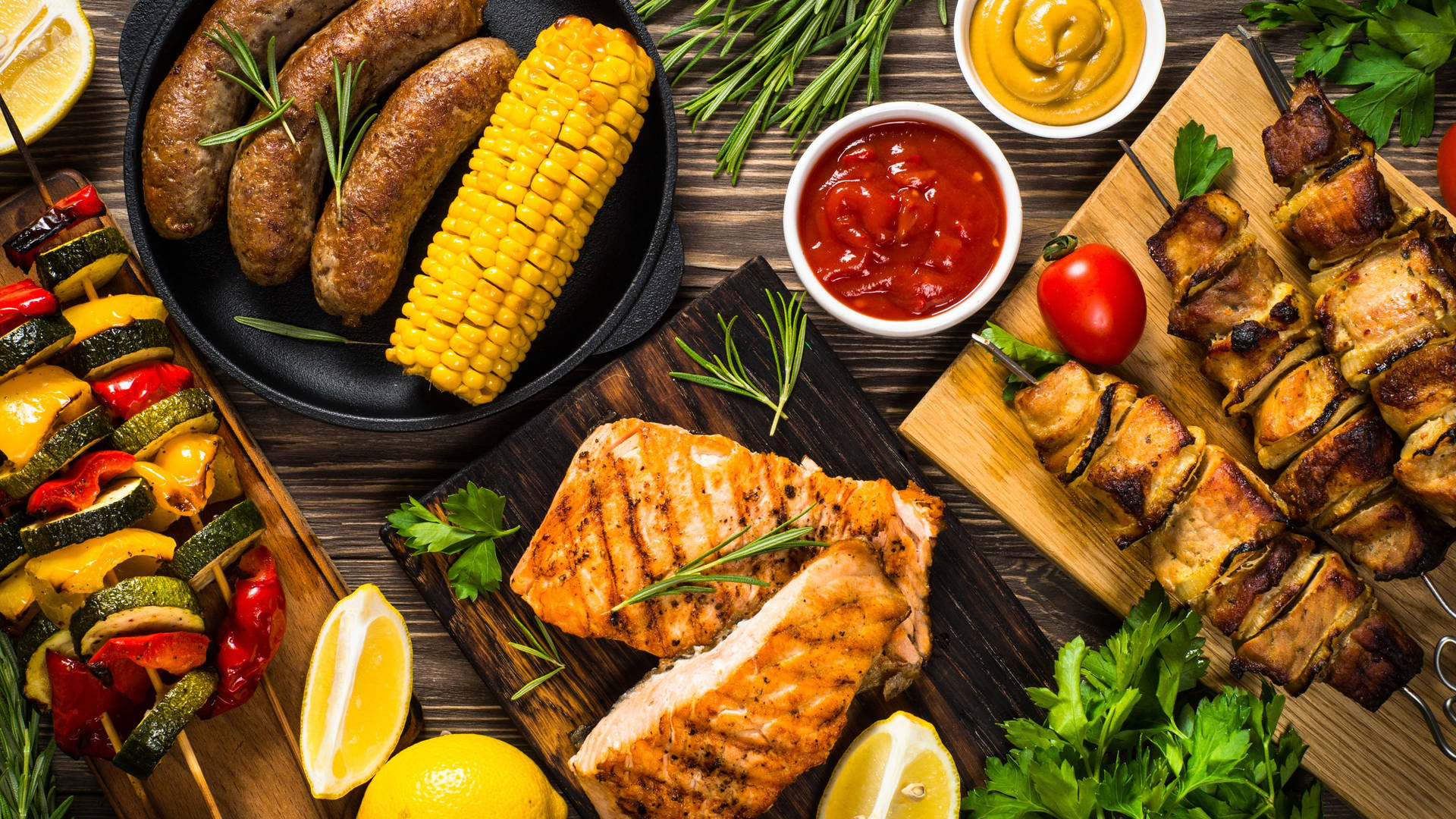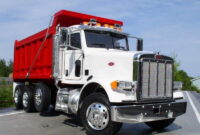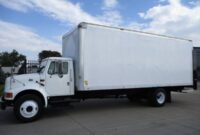Food Truck Vs Concession Trailer: Navigating Your Mobile Culinary Dream pickup.truckstrend.com
The aroma of sizzling street food, the vibrant graphics of a custom-built mobile kitchen, and the promise of culinary adventures on the go – the mobile food industry has exploded in popularity, offering aspiring restaurateurs a dynamic alternative to traditional brick-and-mortar establishments. At the heart of this booming sector lies a fundamental decision for any entrepreneur: should you invest in a food truck or a concession trailer?
This isn’t merely a choice between two types of vehicles; it’s a strategic decision that profoundly impacts your operational flexibility, initial investment, ongoing costs, brand identity, and even your daily workflow. Understanding the intricate differences between a self-contained food truck and a towable concession trailer is crucial for laying the groundwork of a successful mobile food business. This comprehensive guide will dissect every angle of the Food Truck Vs Concession Trailer debate, equipping you with the knowledge to make an informed choice for your gastronomic venture.
Food Truck Vs Concession Trailer: Navigating Your Mobile Culinary Dream
Understanding the Basics: What Are They?
Before diving into the nuanced comparison, let’s clearly define our contenders:
-
Food Truck: A food truck is a self-propelled vehicle, typically a converted commercial truck or step van, that houses a complete kitchen within its chassis. It’s an all-in-one unit – drive, park, open for business. Think of it as a restaurant on wheels, designed for seamless mobility and quick deployment. Its integrated nature means the engine, chassis, and kitchen are part of a single asset.
-
Concession Trailer: Also known as a food trailer, a concession trailer is a mobile kitchen unit that is pulled by a separate tow vehicle (e.g., a heavy-duty pickup truck or SUV). It functions as a detached, portable kitchen that can be unhitched and left at a location, allowing the tow vehicle to be used independently. Concession trailers often vary greatly in size, from small pull-behinds to large, semi-trailer-sized operations.

Mobility and Location Flexibility: On the Move or Parked Up?
The very essence of mobile food lies in its ability to change locations, but the degree and ease of this mobility differ significantly between trucks and trailers.
-
Food Truck: Offers unparalleled spontaneous mobility. Want to chase a crowd? Drive to a new event across town? A food truck excels here. Its integrated nature means you simply drive, park, and are ready to serve. This "drive-and-go" convenience makes food trucks ideal for daily street vending, moving between multiple lunch spots, or responding quickly to pop-up opportunities. However, this also means you’re always driving a large commercial vehicle, which can be challenging in dense urban areas for parking or maneuvering.
-
Concession Trailer: Requires a separate tow vehicle, making it less spontaneous. Hitching, unhitching, leveling, and setting up stabilizers add time to your deployment. This makes trailers more suited for longer-term placements, such as multi-day festivals, farmers’ markets, fixed catering events, or semi-permanent spots. Once unhitched, the tow vehicle is free for other uses. While less agile for daily movement, trailers can often be parked in more diverse locations where a large truck might not fit or be permitted to idle.


Practical Advice: If your business model relies on frequent location changes, chasing lunch crowds, or participating in numerous single-day events, a food truck’s agility is a major advantage. If you plan to primarily operate at multi-day festivals, private catering gigs, or one consistent location for extended periods, a concession trailer might be more efficient.
Initial Investment and Operating Costs: The Financial Blueprint
The financial outlay is often the most significant factor in this decision. Both options represent a substantial investment, but their cost structures differ.
-
Food Truck: Generally involves a higher initial investment. You’re purchasing a vehicle and a custom-built kitchen rolled into one. New food trucks can range from $80,000 to $250,000+, depending on the size, equipment, and level of customization. Used food trucks offer a lower entry point ($40,000 – $150,000), but come with the inherent risks of used vehicles (engine issues, wear and tear). Beyond the purchase, you’ll incur costs for commercial vehicle insurance, higher fuel consumption, and integrated maintenance for both the vehicle and kitchen components.
-
Concession Trailer: Typically has a lower upfront cost. You’re primarily paying for the trailer and its kitchen build-out. New trailers can range from $30,000 to $150,000+, while used ones might start from $15,000. This assumes you already own or plan to purchase a suitable tow vehicle, which can be a significant separate expense ($10,000 – $70,000+ for a heavy-duty truck). Operating costs for a trailer include trailer insurance, fuel for the tow vehicle only when moving the trailer, and maintenance primarily on the kitchen equipment and trailer axles/tires. If your tow vehicle doubles as a personal vehicle, some costs are shared.
Practical Advice: Factor in all costs. Don’t just look at the purchase price. Consider insurance (commercial vehicle insurance for a food truck is usually higher than trailer insurance), fuel, maintenance, and the need for a separate tow vehicle for a trailer. Financing options are available for both, but lenders may view them differently.
Operational Considerations & Efficiency: Running the Show
Beyond initial setup, how do these options impact your daily operations and long-term efficiency?
-
Space & Layout: While both are constrained by their mobile nature, concession trailers can often offer more interior space or a more flexible layout for the same overall footprint, as they don’t need to accommodate an engine or driver’s cabin within the primary workspace. This can be beneficial for complex menus requiring more equipment or prep space. Food trucks integrate the kitchen into the vehicle body, which can sometimes feel more compact, but offers a more cohesive workflow.
-
Setup/Teardown: A food truck’s setup is usually quicker – park, deploy serving window, turn on equipment. Teardown is equally swift. A concession trailer requires more steps: unhitch, level, connect utilities, deploy steps/stabilizers. Teardown involves reversing these steps, then hitching up. This adds time to the start and end of each workday or event.
-
Maintenance: A food truck requires maintenance for both the vehicle (engine, transmission, tires, brakes) and the kitchen equipment. A single mechanic might not handle both, meaning multiple service appointments. A trailer primarily requires maintenance for its kitchen equipment and basic trailer components (axles, tires, lights). The tow vehicle is a separate maintenance concern. If your food truck breaks down, your entire business is halted. If your tow vehicle breaks down, you might be able to arrange for another vehicle to move your trailer.
-
Utilities: Both require similar utilities: propane for cooking, a generator or shore power for electricity, and fresh/grey water tanks. The setup for connecting these can be slightly different but the requirements are largely the same.
Branding, Aesthetics & Customer Interaction: Your Mobile Storefront
Your mobile unit is your primary branding tool. How do trucks and trailers stack up?
-
Food Truck: Often perceived as more "trendy" and modern. The entire vehicle serves as a moving billboard, offering a large, seamless canvas for elaborate wraps and branding. The integrated design can feel more professional and established. Customer interaction is typically through a single serving window.
-
Concession Trailer: Can be equally eye-catching with custom wraps and designs. However, the tow vehicle is separate, so the branding isn’t as unified unless the tow vehicle is also wrapped. Trailers can sometimes offer larger serving windows or more creative layouts that allow for different types of customer interaction, such as walk-up counters or integrated seating areas if space allows. For multi-day events, a trailer can be left in place, maintaining brand presence even when you’re not actively selling.
Permitting, Licensing & Regulations: Navigating the Red Tape
Regardless of your choice, expect a significant amount of paperwork. Regulations vary widely by state, county, and city.
-
Common Requirements (for both):
- Business License
- Health Permits (local and potentially state, requiring inspection of kitchen layout, equipment, water systems, etc.)
- Food Handler’s Permits for staff
- Fire Safety Inspections
- Sales Tax Permits
- Zoning and Parking Permits (especially for street vending)
-
Food Truck Specific:
- Commercial Driver’s License (CDL) may be required depending on vehicle weight (though most standard food trucks do not require a CDL).
- Department of Transportation (DOT) regulations for commercial vehicles.
- Specific vehicle registration and insurance requirements for commercial automobiles.
- Parking regulations can be stricter for large commercial vehicles.
-
Concession Trailer Specific:
- Trailer registration and licensing.
- Brake controller and appropriate hitch for the tow vehicle.
- Tow vehicle must meet specific weight capacities (Gross Vehicle Weight Rating – GVWR).
- Regulations regarding where trailers can be parked or stored when not in use.
Practical Advice: Begin researching local regulations before making any purchase. Engage with your local health department, city planning office, and DMV. Regulations are often the biggest hurdle for new mobile food businesses.
Choosing the Right Fit: Practical Advice
The "best" option isn’t universal; it’s the one that aligns with your specific business plan and personal preferences.
-
Define Your Business Model:
- Street Vending & Daily Routes: Food Truck wins for agility.
- Festivals, Fairs & Events (multi-day): Concession Trailer often preferred due to easier setup for longer stays and freeing up the tow vehicle.
- Catering & Private Gigs: Both work well, but a trailer might be easier to drop off at a venue.
- Pop-Ups & Recurring Markets: Both can work, but consider travel distance and setup time.
-
Assess Your Budget: Be realistic about upfront costs, ongoing expenses, and the potential need for a tow vehicle. Don’t forget the emergency fund for repairs.
-
Consider Your Mechanical Aptitude & Comfort with Driving/Towing: Are you comfortable driving a large commercial vehicle or mastering the art of towing a heavy trailer?
-
Evaluate Your Menu: Does your menu require extensive prep space or specialized equipment that might fit better in a larger trailer?
-
Long-Term Vision: Do you envision expanding to multiple units? Trailers might be easier to scale as you just need more trailers and tow vehicles, rather than entire new self-contained trucks.
Price Table: Food Truck vs. Concession Trailer Comparison
| Feature/Cost Category | Food Truck (Estimated Range) | Concession Trailer (Estimated Range) | Notes |
|---|---|---|---|
| Initial Purchase | |||
| New (Vehicle + Build) | $80,000 – $250,000+ | $30,000 – $150,000+ | Trailer cost typically excludes tow vehicle. |
| Used (Vehicle + Build) | $40,000 – $150,000 | $15,000 – $80,000 | Condition varies widely; inspect thoroughly. |
| Kitchen Build-out | Included in above | $15,000 – $100,000 (part of trailer cost) | Varies based on equipment, complexity, and custom fabrication. |
| Tow Vehicle (if needed for trailer) | N/A | $10,000 – $70,000+ (if buying new/used) | Essential for trailers; must meet GVWR requirements. |
| Permits & Licenses (Annual) | $500 – $3,000 | $500 – $3,000 | Varies by state/city, includes health permits, business licenses. |
| Commercial Insurance (Annual) | $2,000 – $10,000 | $1,000 – $5,000 | Higher for food trucks due to vehicle liability, often more complex. |
| Fuel Costs (Monthly) | $400 – $1,500+ | $100 – $500 (for towing) | Food trucks use fuel daily; trailers use fuel only when towed. |
| Maintenance (Annual) | $1,000 – $5,000+ | $500 – $3,000 | Truck includes engine/chassis; trailer primarily equipment/axles. |
| Vehicle Registration (Annual) | $100 – $500 | $50 – $300 | Varies by state. |
| Depreciation | Higher initial depreciation | Lower initial depreciation | Food trucks depreciate as vehicles; trailers as equipment. |
| Storage (Monthly) | $100 – $500 (if not parked at home) | $100 – $500 (if not parked at home) | Similar for both if external storage is required, depending on size. |
| Overall Mobility | High (Drive-and-go) | Moderate (Requires hitching/unhitching) | |
| Space/Layout Options | More compact | Potentially larger/more flexible | |
| Setup/Teardown Time | Quicker | Longer |
Frequently Asked Questions (FAQ)
Q1: Which is generally cheaper to start: a food truck or a concession trailer?
A1: A concession trailer generally has a lower initial purchase price, especially if you already own a suitable tow vehicle. However, when factoring in the cost of a new tow vehicle, the total investment can sometimes approach that of a used food truck.
Q2: Do I need a special driver’s license to operate either?
A2: For most standard food trucks and concession trailers, a regular driver’s license is sufficient. However, if the Gross Vehicle Weight Rating (GVWR) of the food truck or the combined weight of the tow vehicle and trailer exceeds certain limits (typically 26,001 lbs), a Commercial Driver’s License (CDL) may be required. Always check your specific state’s DMV regulations.
Q3: Which is easier to manage on a day-to-day basis?
A3: This depends on personal preference and skill set. A food truck is "drive and go," simpler for quick moves. A trailer requires more setup/teardown time and proficiency in towing. If you dislike towing, a food truck is easier. If you prefer to drop off your kitchen and use your vehicle for other tasks, a trailer is better.
Q4: Can I build my own food truck or concession trailer?
A4: Yes, it’s possible, but highly challenging. You must adhere to strict health codes, fire safety regulations, and vehicle/trailer construction standards. It often requires professional plumbing, electrical, and fabrication work to pass inspections. Most choose to buy pre-built or custom-built units from reputable manufacturers.
Q5: Which is better for large, multi-day events or festivals?
A5: Concession trailers are often preferred for multi-day events. They can be unhitched and left at the venue, freeing up your tow vehicle for errands, supplies, or personal use. Food trucks remain static at the event, consuming fuel if idling for power, and tying up the entire vehicle.
Q6: What about parking and storage?
A6: Both require adequate parking or storage. Food trucks need space for a large commercial vehicle, which can be difficult in residential areas or city centers. Concession trailers require a secure lot for storage when not in use, and a suitable space for the tow vehicle.
Conclusion
The choice between a food truck and a concession trailer is a pivotal decision that will shape the trajectory of your mobile food business. There’s no universally "better" option; rather, it’s about aligning your selection with your unique vision, financial capacity, operational style, and target market.
A food truck offers unparalleled agility and a cohesive brand presence, ideal for dynamic street vending and quick location changes. A concession trailer provides cost efficiencies, potential for larger kitchen layouts, and flexibility in tow vehicle use, making it an excellent choice for fixed locations, long-term events, or those who prefer to separate their vehicle from their kitchen.
Thorough research, meticulous financial planning, and an honest assessment of your operational preferences are paramount. By carefully weighing the pros and cons presented in this guide, you can confidently choose the mobile kitchen format that best empowers you to bring your culinary dreams to the streets.



